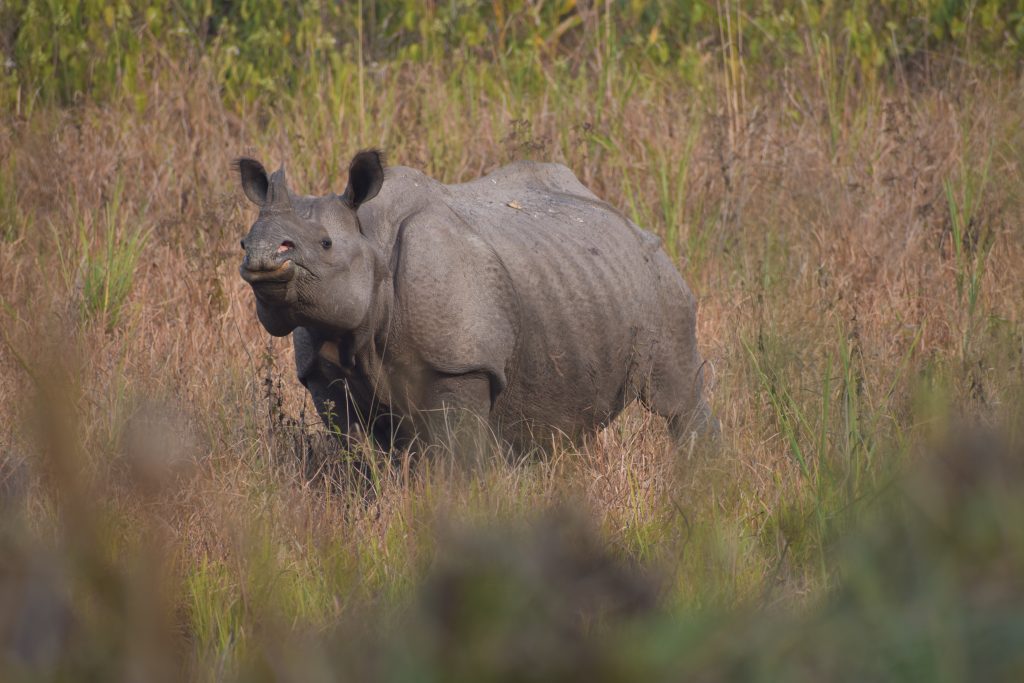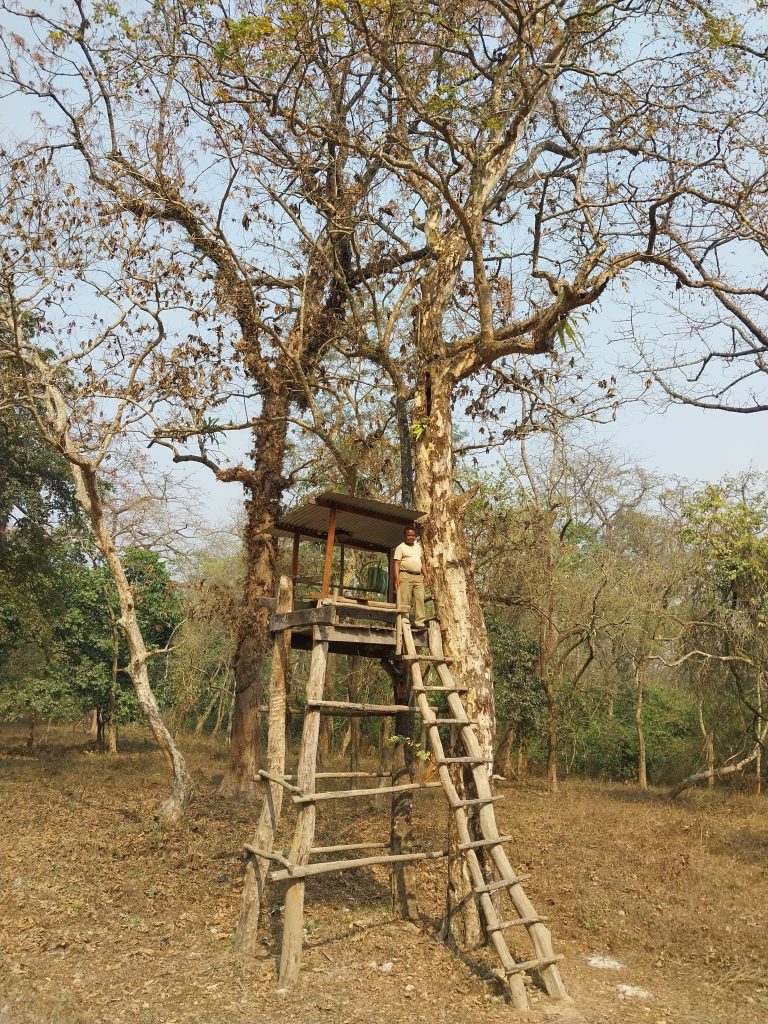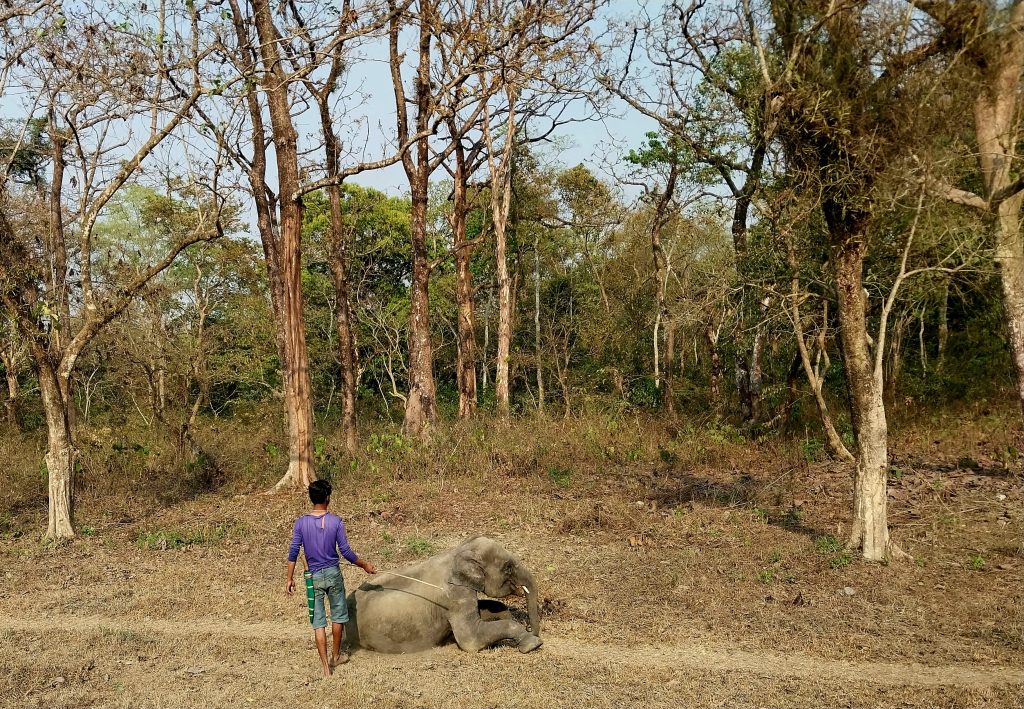From only 14 rhinos in 1985, which was an all-time low, there are 292 animals now in this national park in West Bengal’s Alipurduar district. A report by Deepanwita Gita Niyogi

Guide Bholaprasad Sharma spotted the two animals, partially hidden in the thick foliage. Perhaps, spending 19 long years as a safari guide has trained him to spot wildlife quickly.
In the blazing sun, it took a few more minutes to see them prominently. Then they fully came into view: two beautiful rhinos, the pride of Jaldapara National Park in Alipurduar district of West Bengal.
Jaldapara has an interesting history. It was once the hunting ground of the Cooch Behar royal family. In 1941, it was declared a game sanctuary. In 1976, Jaldapara became a wildlife sanctuary, and in 2012, a national park.

Spread over an area of 216.51 sq km, Jaldapara is a riverine ecosystem crisscrossed by several important rivers which change their courses. The main rivers are Torsha, Hollong and Buri Torsha. The region’s grasslands offer a suitable habitat to the rhino population.
Rhino turnaround
At his office inside the Jaldapara National Park, Novojit De, assistant wildlife warden, talked about the turnaround of the rhino population. From only 14 rhinos in 1985, the lowest count ever, there are now 292 animals in Jaldapara as per the 2022 rhino census report. The turnaround happened due to several interventions.
“To create a suitable habitat for the animals, the forest department maintains fodder grass species like Madhua and Malsa. Some grasses like Kasia, Chepti and Ulu, however, occur naturally in the riverbed. Rhinos need these grasses for survival,” said De.
According to the forest officer, there is a successive change in Jaldapara’s vegetative landscape dominated mostly by Semul and Khair trees. This is due to the rivers changing their courses annually. “Initially grasses come up, followed by weeds and trees on riverbeds. On its part, the department intervenes and stops this succession as there is a need to maintain only good quality grasslands for rhinos. They prefer grasslands to forests. Thus, we keep grasslands intact and try to stop secondary succession like the growth of weeds and trees through removal, cleaning, burning and cutting back.”
Besides positive intervention measures to improve the habitat, there is heightened protection in place to counter poaching. Jaldapara is a sensitive place as there are about 32 villages in the fringe areas, Sharma said during the safari.

Rhino poaching is an organized crime. Demand is floated for horns in the global market and then crimes are planned. As it is lucrative, local communities often help poachers.
Keeping an eye
In Jaldapara, there are anti-poaching camps at all strategic locations where staff work in shifts and remain ever alert. Still, poachers have been active. Data provided by the department reveals that the last poaching case happened in 2021 during which one animal was killed. There was one case each in 2018 and 2019. In 2014, three poaching cases were recorded and in 2015 four such cases took place. No cases happened in 2016, 2017 and 2020, the lockdown year.
During the safari time in Jaldapara which stretched for about two hours, apart from the two rhinos, elephants, deer and peacocks were also spotted. As the vehicle sped along, staff quarters and watchtowers, locally called tongs, were seen. The guide explained that there is always a person on duty atop these watchtowers.
At a temporary watchtower resembling a machan set up on a tree where the vehicle halted for a while, Matiyas Kharia, a resident of Purba Madarihat village informed that he has been working in Jaldapara since 2014. “Many of us carry out foot patrolling and also do night duty on a rotational basis,” said Kharia whose tong is made of Sal tree wood. Apart from this one, there were other watchtowers seen along the stretch. Kharia is usually on duty from 12 pm to 6 pm. After he leaves, the night guard comes.
Abdul Kader Miya, whose duty changes after every 48 hours, informed that people residing in the villages help the department by informing on time about any conflict situation.
As there are many villages within two kilometers of Jaldapara, there is human-elephant conflict.
Sharma is from Meghnadsaha Nagar which is a forest village close by. In the last leg of the journey, the guide showed the Hollong tourist lodge built during the 1970s. Situated about six kilometres from the main gate, it offers remarkable sightings due to a salt lick where animals frequent in the evening. At Hollong, a herd of elephants kept visitors spellbound for about 10 minutes.
The guide, who was born so close to Jaldapara, feels a special connection with the landscape where there is constant pressure in the form of fuelwood collection and cattle grazing by locals. This also increases the risk of poaching.
Though only poaching was not responsible for the low count of rhinos in the 1980s, there is an added layer of safety measures for protection. Besides watchtowers and foot patrolling, captive elephants also help in keeping an eye on rhinos. Mahouts are there to control these elephants. Trap cameras have been set up in several places and drone patrolling is also carried out.
De revealed that there are special teams to counter wildlife offences. Sometimes, there are issues with locals who enter inside the forest for firewood.
To conserve rhinos in the long run across critical habitats, the Indian Rhino Vision (IRV) 2020 programme was launched in 2005. Now, there is IRV 2.0 with a special focus on Assam which will continue till 2030. In West Bengal, besides Jaldapara, there are 52 rhinos in the Gorumara National Park.












